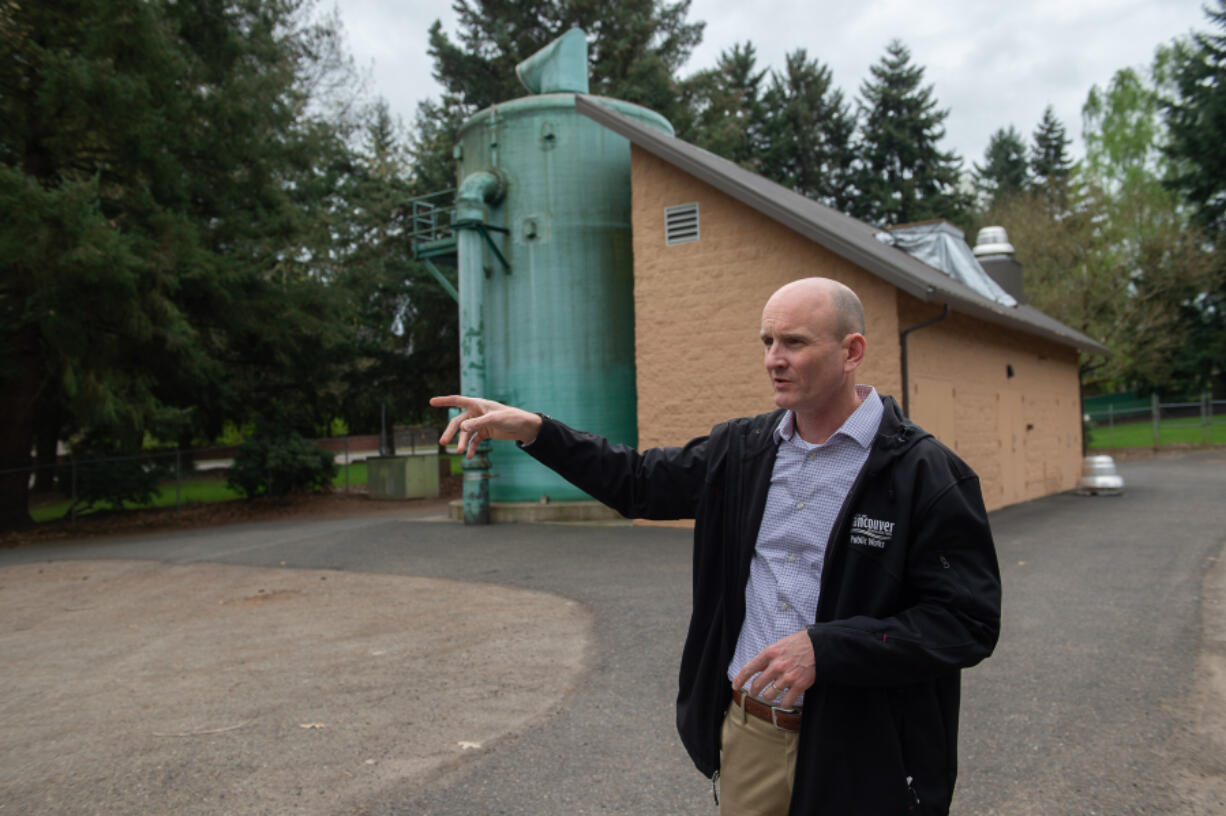There’s an old adage that nothing lasts forever, except perhaps true love and diamonds. Now we can add per- and polyfluoroalkyl substances, or PFAS, to that short list. In recent years, both the city of Vancouver and Clark Public Utilities have discovered PFAS, more commonly known as “forever chemicals,” in some water sources.
What are PFAs?
Per- and polyfluoroalkyl substances are a large group of chemicals that includes perfluorooctane sulfonate (PFOS), perfluorooctanoic acid (PFOA), perfluorononanoic acid (PFNA) and perfluorohexane sulfonate (PFHxS), all of which have been detected in humans.
“These are human-made chemicals. They’re ubiquitous, they’re everywhere. Most, if not all, of us have been exposed to some of these chemicals,” said Dr. Alan Melnick, director of Clark County Public Health.
Starting in the mid-20th century, PFAs were used to manufacture a wide array of consumer goods, including nonstick cookware, stain-resistant fabrics for outdoor clothing, food packaging and firefighting foam.
While some older PFAS have been banned or are no longer used, newer PFAS have replaced them and are still in use today.
How do PFAS get in our water?
These chemicals can end up in water supplies through industrial release, discharges from sewage treatment plants, leaching from landfills or through the use of firefighting foam.
“Once they are produced, they don’t break down,” Melnick said.
For example, if someone throws an old rain jacket in the trash, that jacket will eventually end up in a landfill.
Over time, the material used to make the jacket will break down. Metal zippers and snappers will rust and decay. But the PFAS used for waterproofing will not. Instead, the PFAS will leach into the soil and water below.
In the case of a residential, commercial or industrial fire, foam used to put out the fire can get washed away into sewers and stormwater runoff drains. From there it can end up in nearby rivers and streams or move on to wastewater treatment plants that may not be able to adequately capture and remove the chemicals.
What are the health risks?
According to the U.S. Centers for Disease Control and Prevention, PFAS have been found in 98 percent of human blood samples.
“These long-chain PFAS build up and stay in the human body for many years. The levels decrease very slowly over time after exposure is reduced or stopped,” the CDC states.
While preliminary data shows PFAS can increase health risks, Melnick said further studies are needed to understand the magnitude of those risks.
Exposure may lead to higher cholesterol levels, elevated liver enzymes, increased risk of kidney and testicular cancer and increased risk of thyroid disease, Melnick said. He added that it’s difficult to point to PFAS with certainty because other causes must first be ruled out.
“We’re especially concerned about pregnant women and children’s exposure,” Melnick said. “There might be a decreased response to vaccines in children who have elevated levels of PFAS in their blood.”
How bad is the problem?
In April 2023, testing found three of Vancouver’s nine water stations had higher levels of PFAS than allowed by the state. The most common compounds found at Water Stations 4, 14 and 15 were perfluorooctanoic acid (PFOA) and perfluorooctane sulfonic acid (PFOS).
Washington’s threshold is 10 parts per trillion for PFOA and 15 parts per trillion for PFOS. Vancouver’s Water Station 14 measured 11½ parts per trillion for PFOA and 18.6 parts per trillion for PFOS.
Since then, additional testing has shown PFAS levels are dropping.
“There’s no clear explanation,” Tyler Clary, Vancouver water engineering program manager, said in a January interview.
However, Clary had some ideas about what was behind the drop. He said water managers currently adjust operations to prioritize stations with lower PFAS levels while diluting stations with higher concentrations. Water demand typically lessens during colder months, which may have contributed to the lower sample results. Only time will tell if the trend continues.
Testing at a Clark Public Utilities offline well in July showed trace amounts of PFOA at 8 parts per trillion, just under the state level.
“Even at these extremely low levels, the detection at this well was very surprising,” Clark Public Utilities spokesperson Dameon Pesanti said in a July interview.
Clark Public Utilities has regularly tested its water since 2014, in accordance with state and federal regulations. In 2021, it began using more advanced technology that could detect PFAS levels down to 2 parts per trillion.
What is being done?
Vancouver has been working to create and adopt a PFAS management plan. The plan was finalized in January.
“The plan establishes a schedule for full-scale PFAS mitigation at water production sites exceeding currently proposed regulations,” Clary said.
Clary said the city is working to identify funding sources so mitigation alternatives can be implemented without creating a burden on ratepayers.
Vancouver is also moving forward with a $15.7 million project to install a treatment system at Water Station 14 at 6803 N.E. 78th St., which had the highest concentration of PFAS. The city council this week hired a consultant to begin design of a treatment system at Water Station 4, near Blandford Drive and East Fifth Street.
The PFAs management plan will also serve as a roadmap to assist the city in complying with future regulations, he added. The U.S. Environmental Protection Agency is expected to finalize its proposed PFAS regulations and begin enforcement by the end of 2026.
Long-term strategies in the city’s plan call for treating existing sources and determine whether deeper aquifers can become a new resource. Each comes with its own challenges. Treatment occurs in large vessels where water is filtered through granular activated carbon or an ion exchange. Although treatment methods aren’t complex, the equipment needed is expensive and requires a lot of space.
Finding new water would require Vancouver to move its existing wells to deeper sources, which would require state approval and further treatment for manganese.
Clark County Public Health website also has information on water testing and how to check your water source at clark.wa.gov/public-health/pfas-drinking-water.
While minimizing your consumption of food products that contain PFAS sounds good, it can be difficult as the federal government does not require products with PFAS to be labeled.
In 2018, Washington banned the use of PFAS in firefighting foam and also banned training with PFAS foam. That same year, the state also restricted the use of PFAS in food contact papers and paperboard such as pizza boxes, food wrappers and lines, once safer alternatives were identified.
In 2023, the Legislature restricted intentionally added PFAS and eight other potentially harmful types of chemicals in cosmetics and personal care products starting in January 2025.




